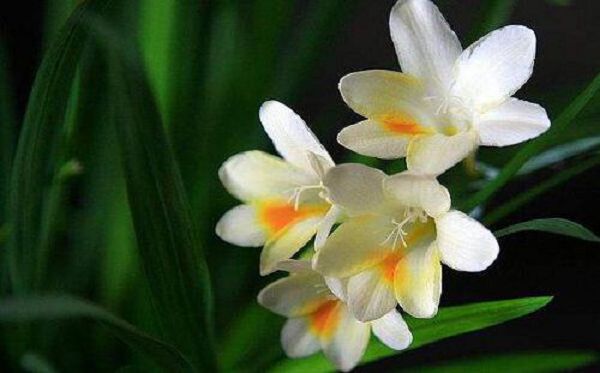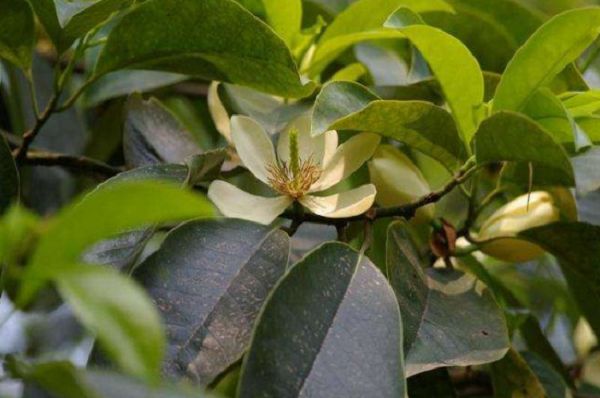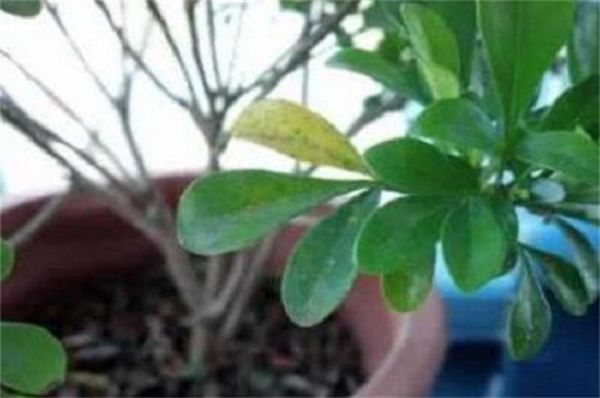When does fragrant snow orchid blossom? What month is the flowering period of vanilla?

Cymbidium belongs to Iridaceae and perennial bulbous herbaceous flowers. Bulbs narrowly ovate or ovoid, leaves sword-shaped or strip-shaped, flower stems erect, flowers erect sessile, yellowish or yellowish green, fragrant, bracts broadly ovate or ovoid, perianth tube trumpet-shaped, perianth lobes ovoid or elliptic, capsule subovoid. So when does fragrant Shirley blossom? What month is the flowering period of vanilla?
According to Xiangxue orchid growers understand that Xiangxue orchid is a more common indoor ornamental flower in winter, so its florescence is mostly in winter. In general, sweet cherries are planted in autumn and blossom in winter and spring. Of course, there will be exceptions, and sometimes Xiangxue will blossom in March-April. Generally speaking, the flowering period of Xiangxue orchid is from February to May.
When vanilla blossoms, the flowering period is usually about 15 days. The flowering stem is branched or branched, with spikelike flowers at the top, with about 5 Murray and 7 flowers on each inflorescence. After flowering, it will bear fruit.
Factors affecting flowering time of Cymbidium fragrans
Although the flowering period of Xiangxue orchid is between February and May, the specific flowering time is actually very irregular.
In fact, the florescence of fragrant snow orchid will appear this kind of unfixed phenomenon, mainly is the influence of the planting time of fragrant snow orchid, in addition, it is affected by the temperature and light of maintenance.
If the planting time is in August or September, the flowering time is generally in winter, autumn planting, flowering may be in winter and spring. In fact, the planting time will also be affected by the region. In the north, the planting of sweet cherry can be carried out in September, while in the south, it can be later.
The effect of temperature is mainly on the differentiation of flower buds, because when the temperature is kept at a low temperature of 8 ℃-13 ℃, flower buds are easier to differentiate. During this period, if the temperature is lower than 18 ℃, the flowering period will be delayed, and if the temperature is higher, it can blossom earlier, but the plant is easy to weaken.
The effect of light mainly refers to the time of light. Under the condition of short days, the bud differentiation of fragrant cymbidium will be better. After flower bud differentiation, long-day sunshine can also blossom early.
Habitat of producing area
Native to southern Africa. There are many open-air cultivation in southern China and potted plants in northern China.
Growth habit
Xiangxue orchid prefers cool, humid and sunny environment, and its cold resistance is poor. The suitable temperature for growth is 15 ℃ ~ 20 ℃, and the lowest overwintering temperature is 3 ℃ ~ 5 ℃. The temperature difference between day and night is large, which is beneficial to growth and development. The suitable temperature is 10 ℃ ~ 15 ℃ at night and no more than 20 ℃ in daytime, otherwise the growth is poor. Like loose, good drainage, humus-rich soil.
During the growth of Xiangxue orchid, the bulb could promote rooting and germination under the condition of 13.5 ℃ ~ 15 ℃. Flower bud differentiation requires a low temperature of 8 ℃ ~ 13 ℃. The suitable temperature should be 13 ℃ ~ 18 ℃ during flower bud development. The florescence was delayed and the flower stem was shortened when the value was less than 18 ℃. Higher temperature can promote early flowering, but plant growth is weak. Under the condition of short-day light, Xiangxuelan is beneficial to promote flower bud differentiation. After flower bud differentiation, long sunshine can blossom earlier. The bulbs are usually sown in September, the flower buds begin to differentiate in early November, and the differentiation is completed in late November. After May of the following year, the leaves withered gradually and the corms entered the period of natural dormancy.
Cultivation techniques
Soil
Xiangxue orchid prefers well drained, loose and fertile sandy loam or cultivated soil plus 20%-50% humus. Before planting, to carry out soil disinfection, can be treated with methyl bromide 50~70g/m2. After application, the rake is smooth, and the seeds can be sown every 5 to 7 days. Pot culture soil can be mixed with rotten leaf soil, pastoral soil, fine river sand and mature organic fertilizer.
Planting
The planting time varies with the type and flowers according to the requirements of the city. The common planting period is from September to October, and the main florescence is from March to April, the cultivation is promoted from the first ten days of September to the middle and last ten days of November, and the cultivation is restrained from January to March. The general plant, row spacing is 8 × 12 cm, and the planting density is 80 × 110 plants per square meter. The planting depth should be 1cm from the top of the bulb to the surface, 2cm to cover the soil, or pine needles, straw, sawdust, etc., to keep the soil moist.
Water and fertilizer
Xiangxue orchid has fine roots and high requirements for soil, so it should be planted in loose soil rich in organic matter. Because the bulb is small and the storage nutrition is limited, phosphorus and potassium liquid fertilizer should be added in 2-4 leaves. Pull a net or set up a bracket to prevent lodging. After budding, water should be properly controlled to make plants grow healthily, and organic compost or coarse-grained organic fertilizer should be applied early before planting to improve soil fertility, soil looseness and aeration performance. The base fertilizer is mainly organic fertilizer, and some chemical fertilizers can also be applied properly, but the amount should not be too much to prevent physiological obstacles caused by the increase of salt concentration in the soil. Topdressing is mainly liquid fertilizer. Continuous cropping is extremely prone to diseases and should be avoided as far as possible.
At the beginning of the basin, you don't need a lot of water, the basin soil should be dry and wet, and it can be watered once a week. By the beginning of February, when budding, the plant will grow rapidly and consume more water, so it is necessary to keep the basin moist. One month after flowering, the water supply should be gradually reduced. Water can be watered once every two days to prevent rotten balls, and the leaves can no longer be watered when the leaves are yellow at the end of February.
Temperature
Both root formation and flower bud differentiation need cooler environment. The root system grows best under the condition of 15-18 ℃, the flower bud differentiation is the best at 12-15 ℃, and the inflorescence grows fastest at 18-20 ℃. Therefore, at the initial stage of planting, the room temperature was kept at 15: 18 ℃; at the leaf stage of 5: 7, the flower primordium was induced by 12: 15 ℃, and the inflorescence development could not be reversed when the temperature was maintained for 4: 6 weeks, and then heated to 16: 17 ℃, so that the inflorescence elongated rapidly and entered the flowering stage.
Light
In the process of cultivation, the young seedling stage and flowering stage should be shaded properly. During the growing period of the first leaf, proper shading can reduce the ground temperature and promote the development of root system. Short-day treatment of about 10 hours before flower bud differentiation is beneficial to promote flower bud differentiation and increase the length of flower stem and the number of flowers and lateral ears on inflorescence.
Properly prolonging sunshine after the completion of flower bud differentiation is beneficial to promote the good development of inflorescence and early flowering. Although fragrant snow orchid likes light, it should also avoid strong light exposure. When the light is too strong and the temperature is high, a shading net with a light transmittance of 70% can be used to shade.
Pest control
Xiangxue orchid is prone to mosaic disease, ball rot and so on. When planting, the soil and bulbs should be thoroughly disinfected, and the basin soil should be changed thoroughly every year. At the same time, attention should be paid to the control of aphids. 1500 times of omethoate or 90% trichlorfon can be sprayed at the initial stage of aphid occurrence.
Related
- Is the orchid suitable for indoor use? Is it good for the body?
- How to prevent the empty root of orchids?
- What to do after the crab claw orchid is withered?
- Why are the leaves of orchids always yellow? Fertilizing and watering.
- Can the root of the gentleman orchid be saved if it is rotten?
- Diagnosis and treatment of cotton-blowing beetle insects in Cymbidium
- There is a way for a gentleman's orchid to rot.
- What is the most suitable temperature and humidity for the orchid?
- How to raise a gentleman's orchid? Cultivation techniques of Cymbidium
- How to prepare the nutritive soil for the cultivation of Cymbidium



